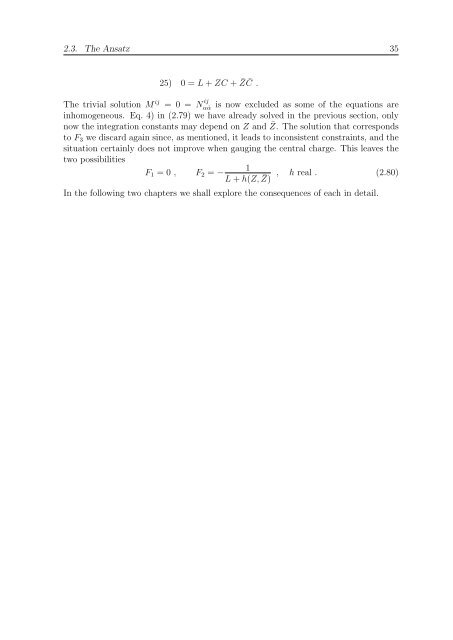N=2 Supersymmetric Gauge Theories with Nonpolynomial Interactions
N=2 Supersymmetric Gauge Theories with Nonpolynomial Interactions
N=2 Supersymmetric Gauge Theories with Nonpolynomial Interactions
Create successful ePaper yourself
Turn your PDF publications into a flip-book with our unique Google optimized e-Paper software.
2.3. The Ansatz 35<br />
25) 0 = L + ZC + ¯ Z ¯ C .<br />
The trivial solution M ij = 0 = N ij<br />
α ˙α<br />
is now excluded as some of the equations are<br />
inhomogeneous. Eq. 4) in (2.79) we have already solved in the previous section, only<br />
now the integration constants may depend on Z and ¯ Z. The solution that corresponds<br />
to F3 we discard again since, as mentioned, it leads to inconsistent constraints, and the<br />
situation certainly does not improve when gauging the central charge. This leaves the<br />
two possibilities<br />
1<br />
F1 = 0 , F2 = −<br />
L + h(Z, ¯ Z)<br />
, h real . (2.80)<br />
In the following two chapters we shall explore the consequences of each in detail.

















